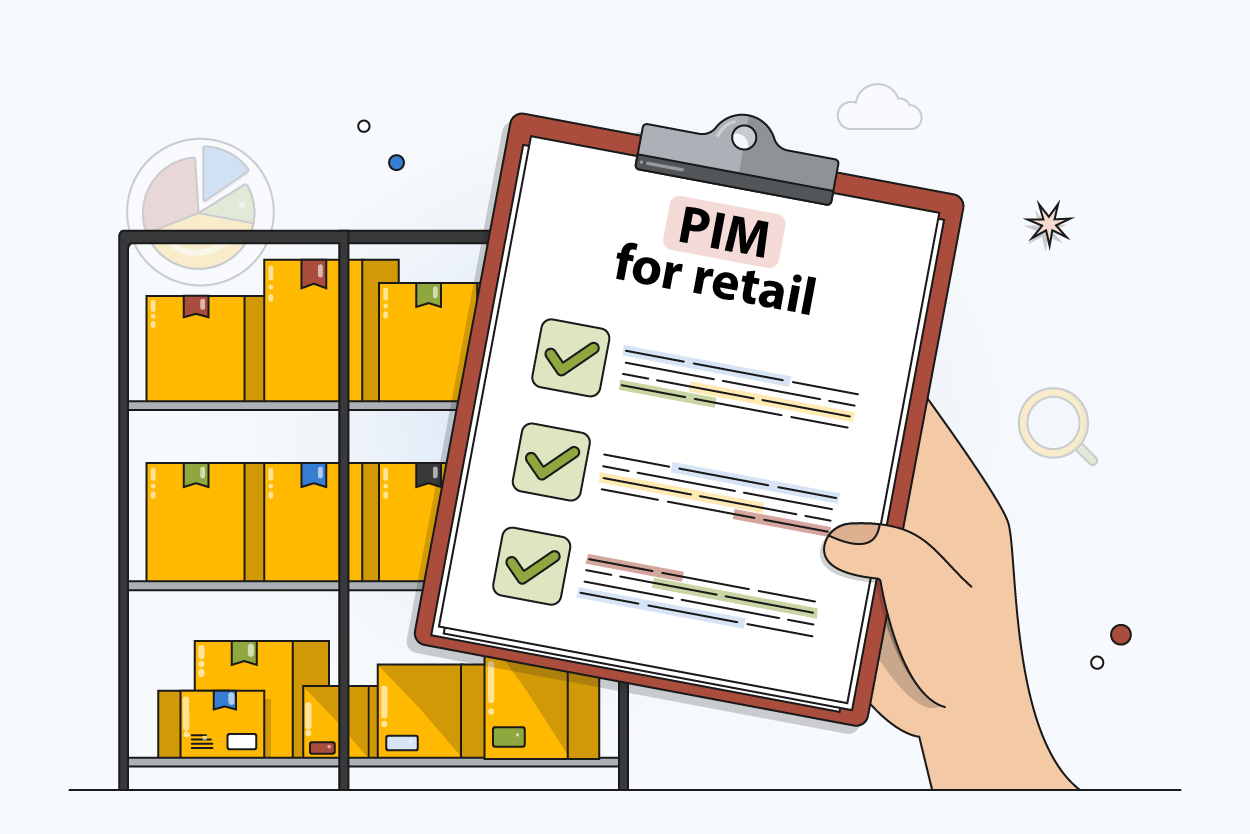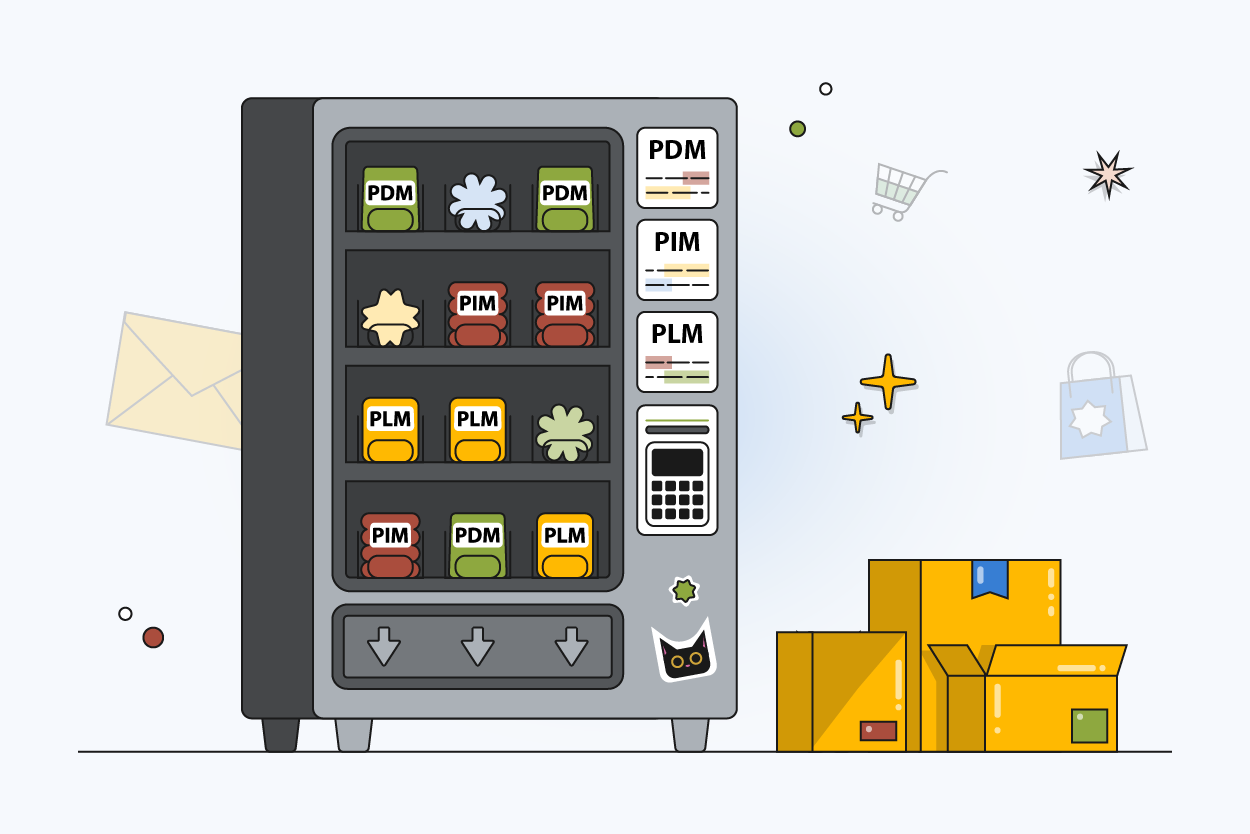PIM vs ERP vs MDM: Complete System Comparison Guide
Author name: Bradley Taylor
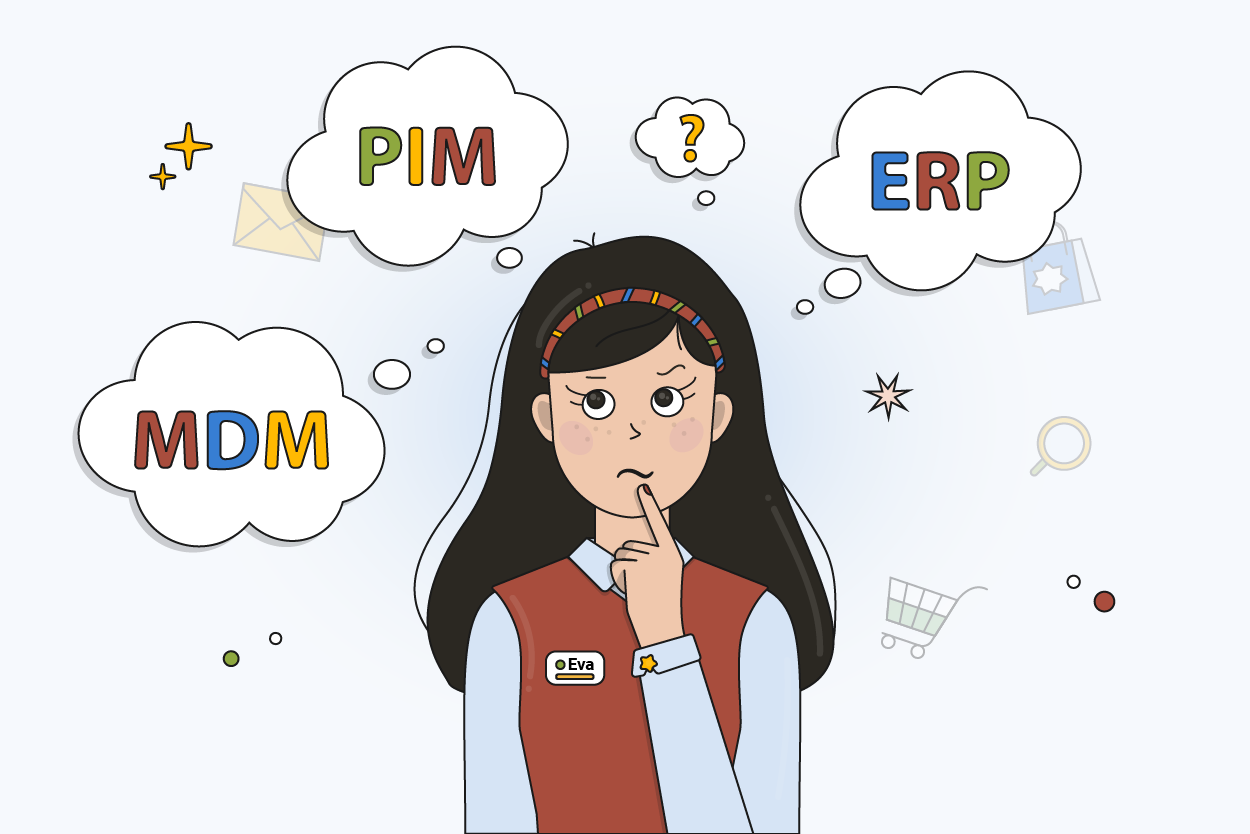
Choosing the right software platform to manage your business information is a significant decision. With all the different platform acronyms, PIM, ERP, MDM, it is easy to end up bewildered. These tools may seem similar, but the true role they play in your business is quite different.
This post is for those looking to get clear on what makes PIM, ERP, and MDM different. Whether your goal is to improve data quality or build a stronger multi-channel marketing strategy, knowing how these systems work will help you choose the right tools for your business.
We’ll break everything down in plain terms so you can match your software choices to what your team really needs.
Quick Comparison Overview
It’s easy to get mixed up between PIM, ERP, and MDM because they all deal with data. But not all data is the same, and each system focuses on different types. Before diving into the details, here’s a quick snapshot to help you see how they stack up.
At a high level:
- PIM handles rich product content and assets
- ERP handles day-to-day business operations across the organization
- MDM creates consistency across all critical master data
While all three assist multiple departments, they tend to serve different primary users. Marketing and ecommerce teams rely on PIM. Operations and finance teams use ERPs frequently. IT and data teams oversee MDM.
Systems at a Glance
| Role in the company | Purpose of using PIM |
|---|---|
| E-commerce managers | Send product listings from the PIM system to online stores, marketplaces, and syndication platforms efficiently. |
| Brand managers | Ensure accuracy and consistency of product data across multiple sales channels and campaigns. |
| Localization and regionalization teams | Prepare product data for specific regional markets, including translations, units, and legal requirements. |
| Marketing managers | Reduce time spent searching, gathering, and validating product information for campaigns and promotions. |
| Sales managers | Use consistent and enriched product data to improve cross-selling, upselling, and overall sales performance. |
| Product marketers | Coordinate tasks for copywriters, photographers, and videographers; integrate PIM with DAM for content management. |
| Category managers | Organize and manage product data efficiently across categories for accurate catalog representation. |
| Data governance managers | Implement and enforce data governance standards and processes across the organization. |
| Product managers | Provide accurate product data to marketing and sales teams and update it as needed for correctness and compliance. |
What is Product Information Management (PIM)?
Think of Product Information Management as your product data headquarters. It's where everything customers need to know about your products lives in one organized space: descriptions that sell, high-quality images, technical specs, pricing, dimensions, translations for global markets, compliance details, and all those digital assets your marketing team creates.
The magic of a high-quality PIM appears when you eliminate juggling separate spreadsheets, content management systems, and ERP databases. Instead of updating product information in five locations (and sooner or later forgetting one), PIM is your one source of truth.
Update a product specification once, and it flows automatically to your website, Amazon listings, and mobile application. It can even help automate the creation of printed catalogs.
The centralization revolutionizes the way teams work together. Your marketing team, product designers, ecommerce managers, and customer support agents now operate off the same playbook. No more uncertainty regarding which product description is up to date or whether that new product image has found its way onto all your sales platforms.

How PIM Software Works
PIM software organizes product data from various sources and stores it as structured records. It provides a single repository where descriptions, technical specs, images, and localization details all converge.
Single product records may hold a vast range of attributes: color, size, measurement, materials, care instructions, and so on. For items with variations or bundles, parent/child relationships make en masse updates easy.
Good PIM solutions also include workflows and permissions. Product teams can assign tasks, track approvals, and confirm that all the content is inspected before launch. Marketing can see what is ready for publishing, and sales can highlight missing information that might affect conversions.
Upon validating your product data, the PIM system can automatically publish approved product content on all your sales channels. It can also connect to different internal systems to seamlessly disseminate key product information.
Key PIM Functions
A good PIM system enables product teams to oversee the whole product content lifecycle. Key functional capabilities include:
- Data aggregation: Brings product data from data feeds, spreadsheets, ERPs, and other systems together.
- Content enrichment: Adds marketing descriptions, technical data, SEO tags, translations, and media files.
- Product hierarchy management: Groups items by variants and categories.
- Role-based access: User groups determine who can view and manage data.
- Validation rules: Notification of missing or invalid product information before going live.
- Channel syndication: Publishes finished content to ecommerce storefronts, marketplaces, internal systems, and print tools.
These features make it easy to manage large, complex product catalogs without causing bottlenecks or inconsistencies.
PIM Benefits
When your product content lives in one central system, everything runs more smoothly. Some of the most impactful PIM benefits include:
- Faster time to market: Teams don’t waste time chasing files or duplicating updates across tools.
- Stronger content consistency: All sales channels show the same accurate product details.
- Higher conversion rates: Clean, complete listings build trust and reduce friction at checkout.
- Fewer returns and support tickets: Clear specs and visuals help customers make the right choice the first time.
- Better collaboration: Everyone from creative to sales works with the same data.
- Ongoing data improvement: Rules and workflows catch errors before they hit your site or catalog.
If you’re scaling ecommerce operations, launching new SKUs regularly, or managing products across multiple channels, PIM gives your team the foundation it needs to grow with less chaos.
Compare PIMinto with Top Solutions
See detailed head-to-head comparisons:
What is Enterprise Resource Planning (ERP)?
Enterprise Resource Planning (ERP) systems bring together key back-office business functions like finance, inventory, procurement, and human resources into a single platform.
An ERP isn't designed to manage complex product data. But when integrated with a PIM system, you can massively improve the overall quality of your data. The ERP manages stock levels, purchase orders, and financial records, while the PIM ensures rich, accurate product content flows consistently to customers.
Teams such as accounting, warehouse managers, and purchasing staff rely on ERP to track transactions, monitor inventory, process invoices, and handle payroll. Together, ERP and PIM form a stronger, more complete product and operational data ecosystem.
How ERP Software Works
ERP software consolidates the main activities of an enterprise into one common platform. Instead of each department working autonomously with its own records, everyone in the organization can rely on the ERP as the core business platform. That consolidation ensures the different business units run efficiently and in sync.
Take a sales order as an example. Once completed, the ERP will immediately update inventory levels, trigger orders for materials needed, and post the sale against the firm's books. It can also trigger procurement teams and adjust production schedules.
Aside from handling sales and stock, ERP also handles employee payroll, tracking hours, and benefits. Financial operations like invoicing, billing, taxation, and reporting are automated too, reducing duplicative work and keeping teams in compliance.
Since all departments are operating off the same up-to-the-minute information, there are fewer errors or duplication. This improves everyday processes and gives the leadership clear guidance needed to make quicker, wiser decisions as the business continues to grow.
Key ERP Functions
ERP systems cover the foundational workflows that keep a business running. Their main functions include:
- Inventory management
- Financial management
- Human resources
- Procurement and supply chain
- Reporting and analytics
ERP Benefits
Bringing your back-office operations into one system can unlock major benefits:
- Better process efficiency
- Accurate inventory tracking
- Financial clarity
- Centralized resource planning
- Business-wide visibility
What is Master Data Management (MDM)?
Master Data Management is a system used to keep your business’s core information clean, consistent, and organized. It focuses on the key records that multiple teams and systems rely on, like customer details, product information, and supplier data.
Rather than letting different platforms store their own versions of the same information, MDM brings everything together. It creates an accurate, up-to-date record for important business data and makes sure every system pulls from that same source. This helps prevent the kinds of problems that happen when teams work from mismatched or outdated data.
How MDM Software Works
MDM software works by consolidating your most important business information into one organized hub. Like a PIM system, its biggest advantage is centralization. But whereas PIM is product-focused, MDM is more general. Its data covers customers, vendors, employees, locations, and so on.
Once that data is consolidated, MDM ensures it's accurate and uniform across all the systems that consume it. No conflicting records, no duplicates, and no squandered time double-checking facts. The correct data arrives in the right places fast: your ERP, CRM, or analytics engines, for instance.
That amount of control comes at a cost, something to consider if you're making a choice on whether to implement MDM or PIM. If all you need is to organize product information for sales and marketing channels, PIM may be enough. But if you have multiple systems and require one view of your company entities per department, MDM has a more comprehensive solution.
Prior to deciding, have a closer examination of your current data stream and business goals. Having an idea where inconsistencies or slowdowns happen can direct you to the system most appropriate for your team.
Key MDM Functions
MDM platforms offer a range of features that help businesses maintain clear, consistent data:
- Data consolidation
- Data standardization
- Duplicate detection and resolution
- Data validation
- Hierarchy and relationship management
- Workflow and stewardship tools
MDM Benefits
Some of the most notable benefits of an MDM system include:
- Improved data quality
- Consistent reporting
- Faster decision-making
- Stronger compliance and governance
- Better system integration
Head-to-Head System Comparisons
Understanding each system individually is useful. But comparing them side-by-side makes the differences clearer.
PIM vs ERP for Product Data
Since both PIM and ERP systems handle product data, it’s easy to see why they get confused. People often ask, If ERP already has product details, why add PIM at all?
The answer is in the kind of product information each system is built to manage. ERP focuses on operational data: stock levels, pricing, and supplier records. It supports back-office functions like accounting, procurement, and inventory control.
PIM manages the content customers see when they shop. That includes product names, marketing descriptions, specifications, images, tags, and translations. It’s built for ecommerce, where product content needs to be complete, up-to-date, and ready for every channel.
You need both systems to run a modern product-based business at scale. ERP handles the internal flow of goods and money, while PIM ensures the customer experience stays accurate and consistent everywhere your products appear.
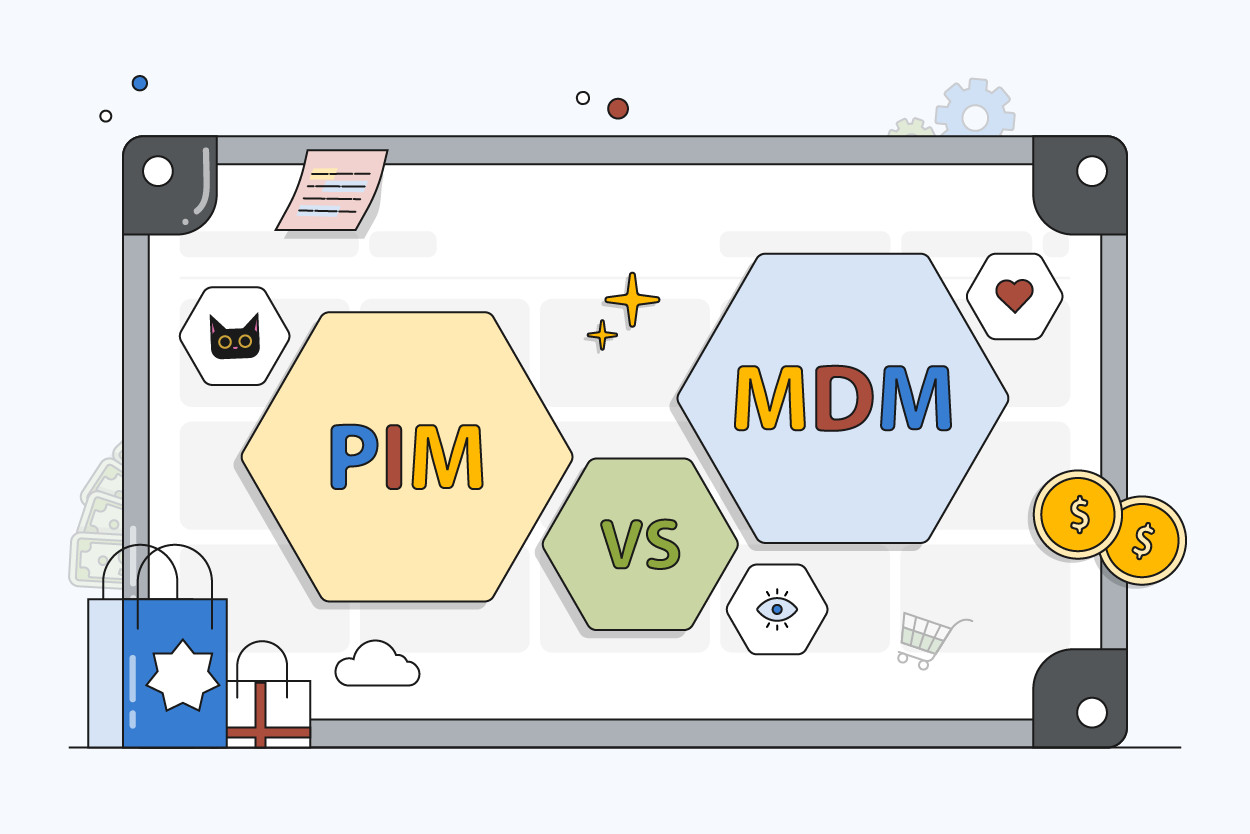
PIM vs MDM for Data Management
One common mistake people make when it comes to PIM and MDM is thinking that implementing one eliminates the need for the other. They’re not interchangeable. While PIM focuses on the depth, quality, and accuracy of product content, MDM focuses on the integrity and consistency of key business data across the organization.
PIM is purpose-built to manage and distribute product content across sales, marketing, and ecommerce channels. It helps teams create rich, accurate product listings that are ready for customers, no matter where they shop.
MDM supports a broader set of business needs. It governs core records across departments. Products, yes, but also customers, employees, suppliers, locations, and other entities. MDM ensures those records stay consistent across every connected system.
For most ecommerce businesses, PIM is the starting point. It solves the immediate need for clean, consistent product information at scale. As your tech stack grows and more teams rely on shared records, adding MDM may become necessary to keep data aligned across platforms.
ERP vs MDM for Business Operations
ERP is for day-to-day operations: order entry, inventory management, payroll, billing, and supply chain management. It's the software that teams utilize to get things done.
MDM, on the other hand, addresses the consistency and quality of data upon which such systems rely. Instead of handling transactions, MDM ensures that important records like customer data, supplier data, and product specifications are accurate and up to date across all platforms.
For example, your ERP may create a purchase order, but in the absence of MDM, the vendor's address or payment terms might be outdated or inconsistent. That can lead to delays, errors, or even compliance issues.
Both, when combined, form a more complete system. ERP brings your business to life. MDM cleans your business data to the nth degree, so there are fewer mistakes, tighter operations, and better reporting.
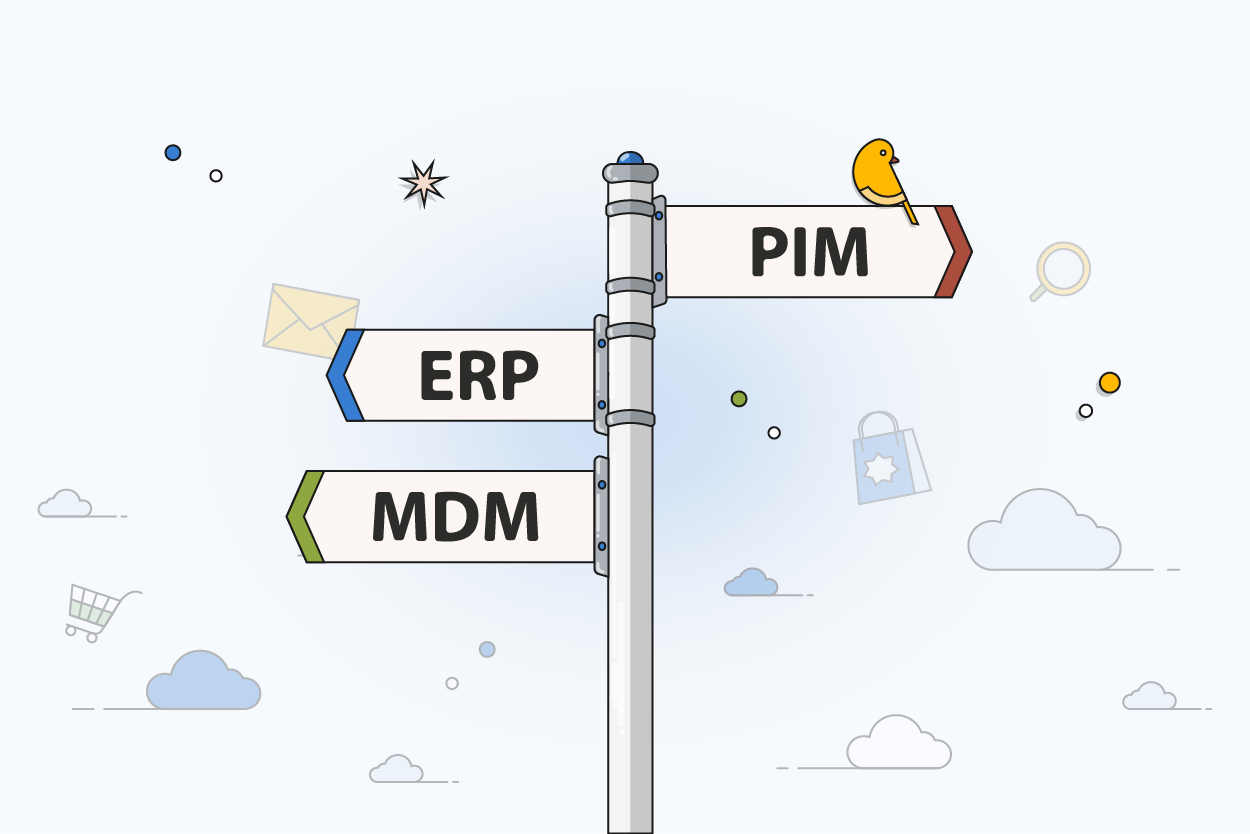
When to Choose Each System
PIM, ERP, and MDM each support different parts of your operations. The right system to start with depends on your internal processes, data challenges, and customer touchpoints.
Use the following guidelines to determine which platform best fits your current needs and growth stage:
Choose PIM When
Go with a PIM system if product data is slowing you down. If your team is juggling spreadsheets, rewriting the same details for different channels, or constantly fixing listing errors, a PIM will make a major difference. It gives you one place to manage product content.
So you can launch faster, stay consistent, and support ecommerce, print, and marketplace listings without the usual chaos.
Choose ERP When
You’re scaling operations and need control over inventory, finance, and procurement. You want unified reporting across departments and better internal workflows.
Choose MDM When
You’re struggling with data quality, duplicate records, or fragmented systems. You need to ensure that all departments and tools use accurate, consistent master data.
Integration Strategies: How Systems Work Together
These systems aren’t mutually exclusive. For some companies, they can work better when used together.
PIM + ERP Integration
This combo helps sync operations with marketing. ERP manages prices and stock. PIM publishes listings and content. Together, they enable faster time to market, lower error rates, and smoother launches.
PIM + MDM Integration
Use MDM to define conventions for product IDs and categories, then use PIM to enrich and publish that data. This reduces rework, improves team collaboration, and increases trust in your data.
Is Your Business Ready for PIM?
Take our 2-minute assessment and get personalized recommendations
- Analyze your current product data challenges
- Get instant recommendations based on your business profile
- See which PIMinto plan fits your needs
- Learn if PIM will solve your specific problems
Related Systems Explained
Several other platforms overlap with or extend these core systems. Here’s a quick breakdown:
- DAM (Digital Asset Management): Organizes digital assets such as images and videos. PIMinto includes DAM functionality built in.
- PLM (Product Lifecycle Management): Manages design and product development. PLM looks at the whole lifecycle, while PIM focuses on product content.
- PXM (Product Experience Management): Adds customer-facing personalization to PIM. Think of it as PIM plus optimization.
- CMS (Content Management System): Runs websites and blogs by managing and publishing content.
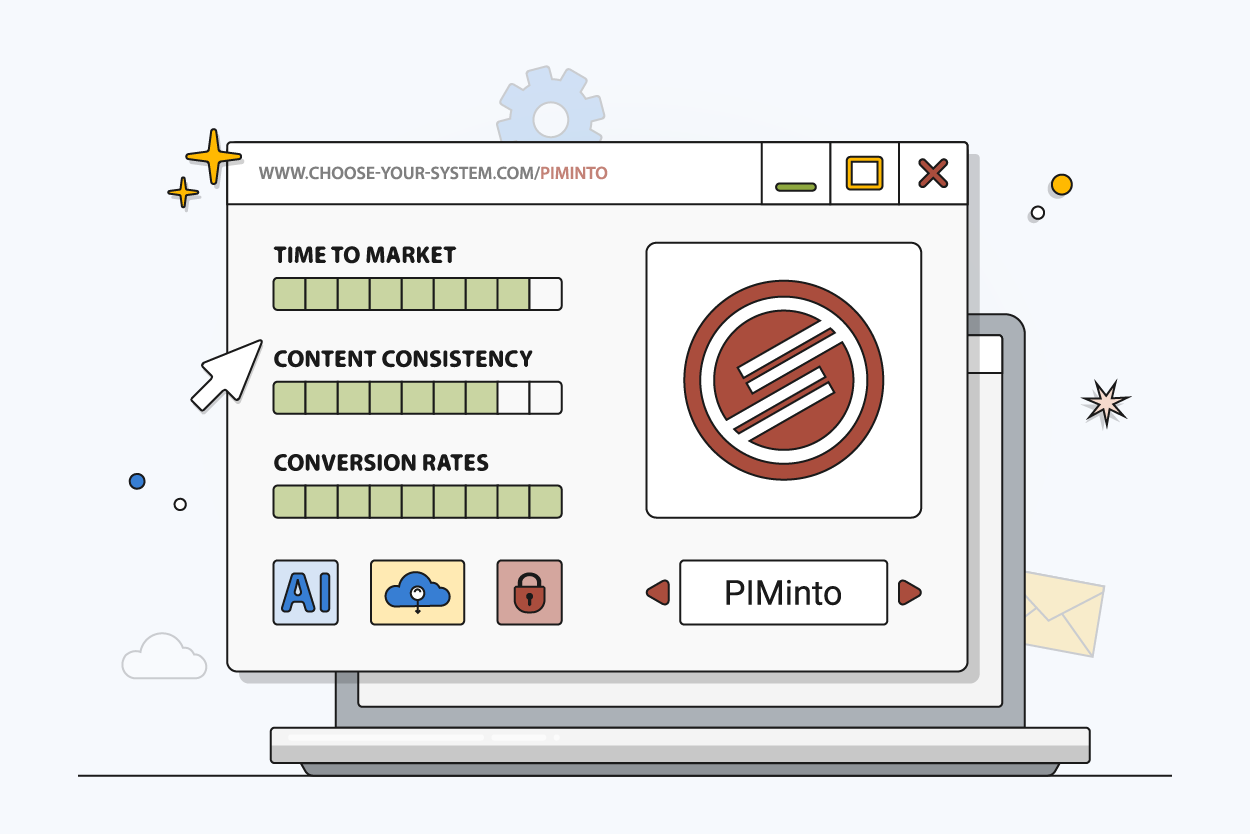
Your Next Step: From Confusion to Clarity
You don’t have to choose between PIM, ERP, or MDM all at once. Start with the system that solves your most urgent problem.
For ecommerce brands, that’s usually PIM. It simplifies your workflows, improves your customer experience, and gives you the structure to scale.
If you’re ready to simplify your product data management, PIMinto can help. Our platform combines modern PIM with built-in DAM and flexible integrations to fit your tech stack.
Stop Guessing – See the Right Solution in Action
Watch how PIMinto solves the exact product data challenges you just read about, so you can make a confident decision for your business.
Modified on: 2024-04-02


